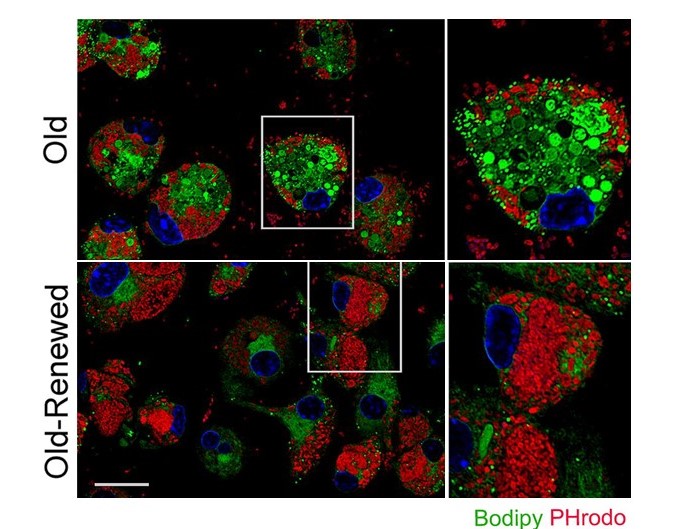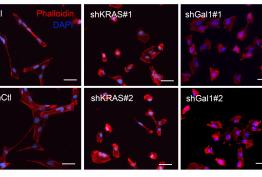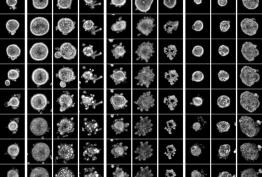More than 12 million people suffer a stroke each year and the neurological consequences are worse in elderly patient, which are also the most vulnerable. Since age is a non-modifiable risk factor for stroke, it is important to understand the mechanisms and the reasons that could explain this worse outcome in older patients.
In a new study, the Cerebrovascular Research group, led by Dr. Anna Planas, used an animal model of cerebral ischemia in aged mice to investigate the status of microglia and their response to ischemic stroke.
Microglia are a population of brain resident cells that plays important functions, such as the elimination of damaged cells and tissue in pathological conditions, among others.
Maria Arbaizar Rovirosa and others members of the group, under the co-direction of Dr. Mattia Gallizioli and with the collaboration of Dr. Albert Pol (ICREA, IDIBAPS, UB), have discovered that one of the consequences of this activity is the accumulation of intracellular organelles made of fat, named lipid droplets. The buildup of these organelles is also observed in microglia of healthy aged mice, possibly contributing to their diminished capacity to react to stroke.
By the administration of a pharmacological treatment to aged mice, researchers were able to replace the old microglia with new microglia, which showed less lipid droplets accumulation. The renewed microglia were observed to be better prepared and more effective at responding to the ischemic insult.
These cellular changes ultimately translated into an improved motor deficit in the ischemic mice in which microglia were renewed.
This study reveals the importance of the metabolism and handling of fat by microglial cells, possibly opening new therapeutic strategies aimed at preserving the capacity of these cells to respond to the cerebral damaged caused by ischemic stroke or possibly also by other age-related neurological diseases.
Reference:
Aged lipid-laden microglia display impaired responses to stroke
Maria Arbaizar-Rovirosa, Jordi Pedragosa, Juan J Lozano, Carme Casal, Albert Pol, Mattia Gallizioli, Anna M Planas
EMBO Mol Med (2022) https://doi.org/10.15252/emmm.202217175
Study financed by grant PID2020-113202RB-I00 of MCIN/AEI/10.13039/501100011033 and “ERDF A way of making Europe”, and supported by CSIC Interdisciplinary Thematic Platform PTI-NEURO-AGING+ of the Spanish National Research Council (CSIC)







